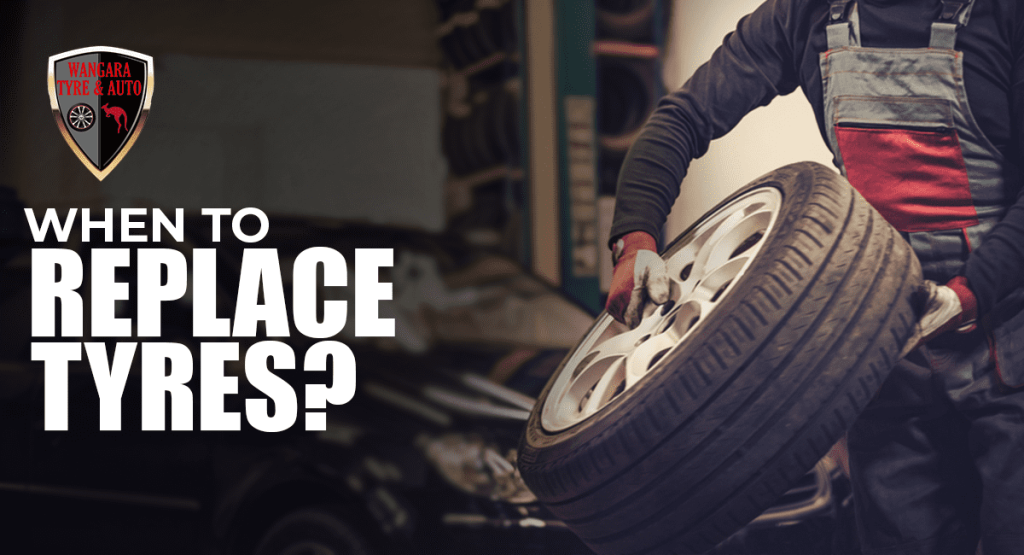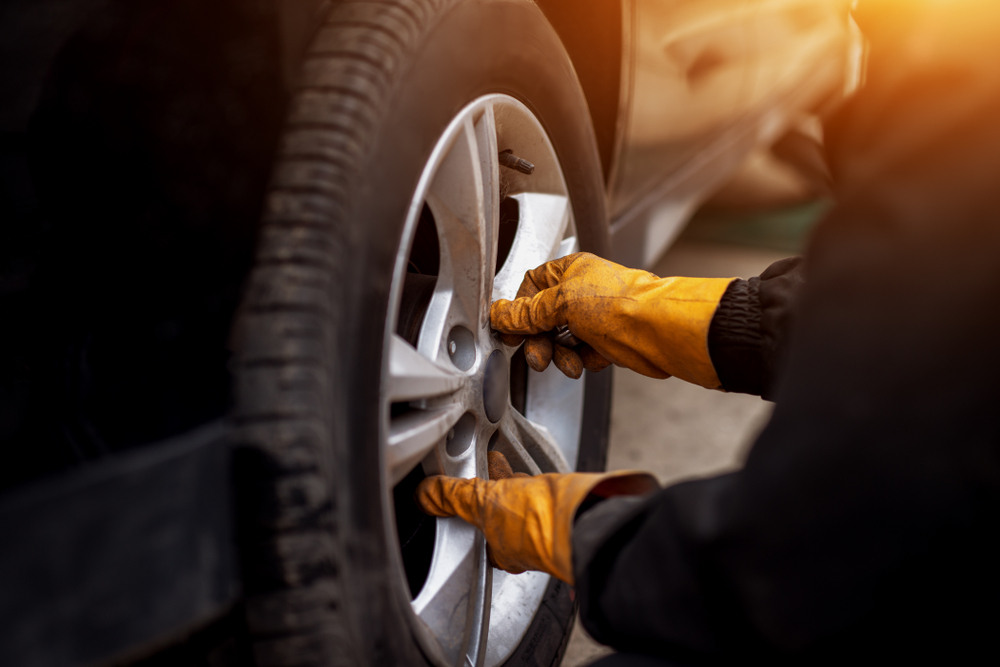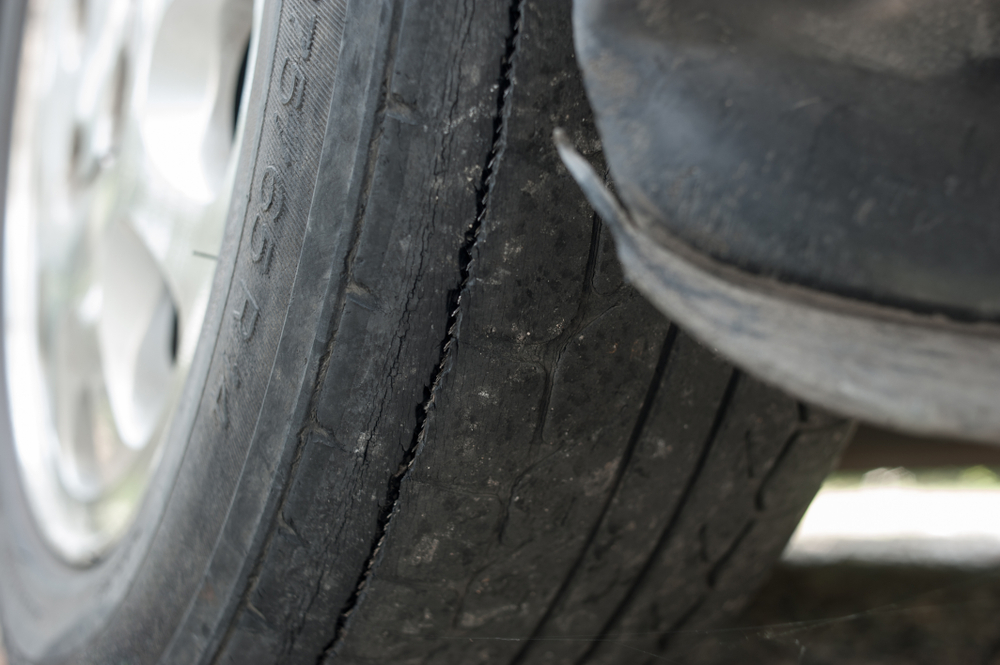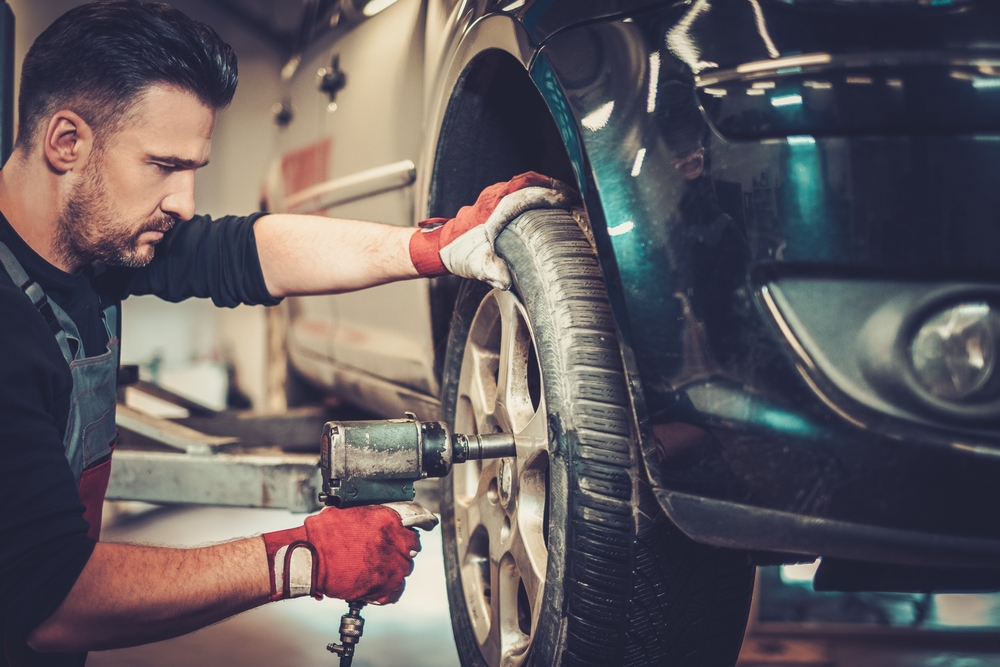When to Replace Car Tyres | 5 Signs You Need to Change

Tyres are the most important components that keep your car glued to the road. So obviously, you should make sure they’re in tip-top shape. But with all the miles you drive, it can be tough to know exactly when it’s time to change tyres.
That’s where Wangara Tyre & Auto comes in!
In this blog, we will help you explore the factors affecting tyre longevity, signs that indicate a tyre change is needed, and provide expert tips on how to change a car tyre. We’ll also discuss how often to change tyres and how our professional services can assist with tyre replacement and maintenance to keep you safe on the road.
So, keep reading to learn everything you need to know about replacing your car’s tyres!
How Long Can a Tyre Last?
The lifespan of a tyre can vary, but a good rule of thumb is to have them checked by a mechanic every 10,000 km or every 12 months. Generally, you should consider changing your tyres every 30,000 to 40,000 km, or every 5 to 10 years.
While some tyres may last between 10,000 to 50,000 km, the NRMA recommends replacing them around the 40,000 km mark for safety. Regular checks and timely replacements help ensure your tyres stay in top condition.Top of FormBottom of Form
5 Signs You Need to Replace Tyres
1. Tyre Tread Wears Out
Tyres wear out when the tread becomes too thin, which can significantly affect your car’s grip on the road while reducing the contact patch (small area of the tyre that touches the road). The legal least tread depth is 1.5 mm. When your tread wears down to this level, that’s where you need a tyre change.
Check for tread wear indicator bars on your tyres; they will be flush with the tread surface when it’s time to replace the tyres.
2. Tyre Damage / Cracks and Bulges
Visible cracks in the tyre sidewall or bulges are clear signs of structural tyre damage. They happen due to many reasons, like hitting a pothole, driving over curbs, or simply from wear and tear over time.
If you notice cracks or bulges on your tyres, it’s crucial to get a car tyre change right away to avoid sudden blowouts and ensure your safety on the road.
3. Vibration While Driving
Feeling excessive vibration while driving is a clear sign that something’s wrong with your tyres.
This vibration can indicate several issues, such as misalignment, imbalance, or internal tyre damage. If your car vibrates unusually, it’s essential to have it checked out. For misalignment, we provide you with wheel alignment service and internal damage usually means you need help in replacing a tyre. Ignoring this sign can lead to problems and further safety issues on the road.
4. Age of the Tyre / Over 6 Years
Even if your tyres still have plenty of treads left, they can need to be replaced if they’re over six years old.
Tyres wear out not just from use but also from the natural degradation of rubber over time. As tyres age, the rubber can become brittle and less effective which increases the risk of a blowout.
5. Changing Weather
It’s a good idea to switch to winter tyres during colder months. Using the same tyres all year round can cause premature wear and tear and reduce your vehicle’s performance. Winter tyres are designed to handle cold, icy, and snowy conditions which keep you safer on the road and extend the life of your tyres.
Explore: Retread Tyre vs New Tyre | Which one is Better?
How Often to Change Tyres?
You should change your tyres every 3-5 years, even if you don’t drive your car often.
Tyres wear out over time, regardless of usage. It’s because the rubber compounds in the tyre start breaking down after five years. That’s why tyres have a date of manufacture stamped into the sidewall.
Explore: Alloy Rims Vs. Steel Rims | A Buying Guide
6 Factors Affecting Tyre Life | What Causes Tyre Wear?
1. Poor Driving Habits
How you drive affects how long your tyres last. Aggressive driving, like sudden braking, rapid acceleration, and hard cornering, makes your tyres wear out faster. Drive smoothly to extend tyre life.
2. Bad Road Conditions
Driving on rough roads with potholes and debris can damage your tyres, causing cuts and punctures. Whenever possible, avoid rough roads or drive slowly and carefully to minimize damage.
3. Improper Tyre Pressure
It’s important to maintain the correct tyre pressure to avoid wear and ensure ideal performance. Under-inflated or over-inflated tyres wear out more quickly and unevenly. So, check your tyre pressure at least once a month and before long trips to make sure they are inflated to the manufacturer’s recommendation.
4. Incorrect Wheel Alignment
Misaligned wheels cause uneven and rapid tyre wear.
If your car pulls to one side or the steering wheel vibrates, it could be a sign that your alignment is off. Regularly checking and adjusting your wheel alignment can prevent premature tyre wear and improve driving safety.
5. Excessive Loading
Overloading puts extra stress on your tyres which causes them to wear out faster. Every tyre has a maximum load rating, which should not be exceeded. Make sure to follow the manufacturer’s recommendations for load capacity to avoid excessive strain on your tyres.
6. Maintenance Practices
Regular maintenance is key to tyre longevity. This includes rotating your tyres every 5,000 to 8,000 miles, balancing them, and checking for proper alignment. Ignoring these practices can lead to uneven wear and reduce the overall lifespan of your tyres.
Explore: Top 12 Common Causes of A Flat Tyre
How to Change a Car Tyre | 8 Easy Steps
1. Safety First:
Park your car on a flat and stable surface. Apply the handbrake and make sure the car is in gear. Plus, turn on hazard lights to alert other drivers.
2. Gather Tools:
You’ll need a jack, a lug wrench, and a spare tyre. It’s also helpful to have a wheel chock or a brick to place behind one of the tyres to prevent the car from rolling.
3. Loosen Wheel Nuts:
Use a wrench to slightly loosen the wheel nuts on the tyre you need to change. Don’t remove them completely yet; just break the resistance.
4. Jack Up the Car:
Position the jack under the car’s jacking point, usually indicated in the owner’s manual or marked on the car’s frame. Then, lift the vehicle until the worn-out tyre is off the ground.
5. Remove the Tyre:
Fully unscrew the nuts and remove the tyre. Place the lug nuts in a safe place where you won’t lose them.
6. Mount the Spare Tyre:
Align the spare tyre with the wheel hub and place it on. Hand-tighten the lug nuts to hold the tyre in place.
7. Lower the Car:
Use the jack to carefully lower the car back to the ground. Once the tyre is supporting the car’s weight, remove the jack.
8. Tighten Lug Nuts:
Grab the wrench and tighten the wheel nuts securely in a star pattern. This confirms even pressure and helps the tyre sit properly on the wheel hub.
Pro Tip: After driving for a short distance, it’s a good idea to recheck the lug nuts to ensure they are still tight. If you’re not confident in your tyre-changing skills, or if you encounter any issues, don’t hesitate to contact a professional.
Explore: Run-Flat Tyres vs Regular Tyres: Choose Right Option
Tips to Make Your Tyres Last Longer
- Make sure the tyre is properly inflated.
- Balance your tyres periodically.
- Rotate your tyres every 10,000 km or as recommended in the car’s manual.
- Replace all four tyres at once or in pairs (on the same axle).
- Ensure your wheels are properly aligned.
- Don’t overload your vehicle.
- Avoid aggressive driving habits like sudden braking etc.
- Regularly check your tyres for any damage.
- Manage regular professional checks
Explore: Ultimate Tyre Safety Checklist By Wangara Auto Tyre
Wondering where to find affordable tyres in Perth?
Visit Wangara Tyre & Auto for a wide selection of Cheap Tyres Perth, offering competitive prices without compromising on quality.
We provide affordable yet high-quality tyres for your truck and 4×4 in Perth.
If you’re not confident in changing your tyres or need professional advice, we also offer comprehensive tyre services, including tyre change, rotations, and wheel alignment.
So, don’t hesitate!




